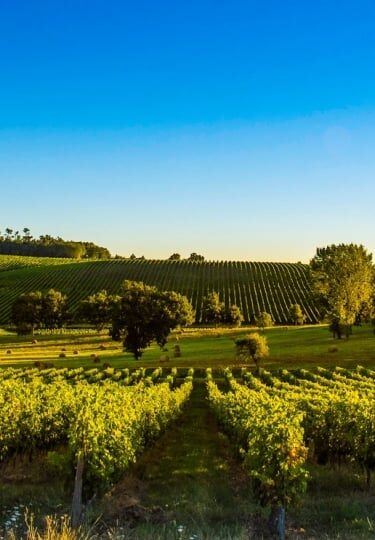The Bordeaux wine region, located along France’s southwestern Atlantic coast, remains one of the world’s preeminent wine-producing sweet spots. The names of Bordeaux’s famous producers are the royalty of the wine world, instantly recognizable enthusiasts, names like Château Margaux, Château Lafite Rothschild, and Château Haut-Brion. Vintage bottles of these wines sell for enormous sums.
In keeping with this sense of history and excellence, the Bordeaux wine region is peppered with imposing mansions, gilded country homes, and moat-encircled castles. These properties have often been in the same family for generations, creating legacies that bolster the pride felt in the production of the renowned tipple. A visit to the Bordeaux wine region is to take a pilgrimage to the very heart of the fine wine universe.
The History of Bordeaux Wine
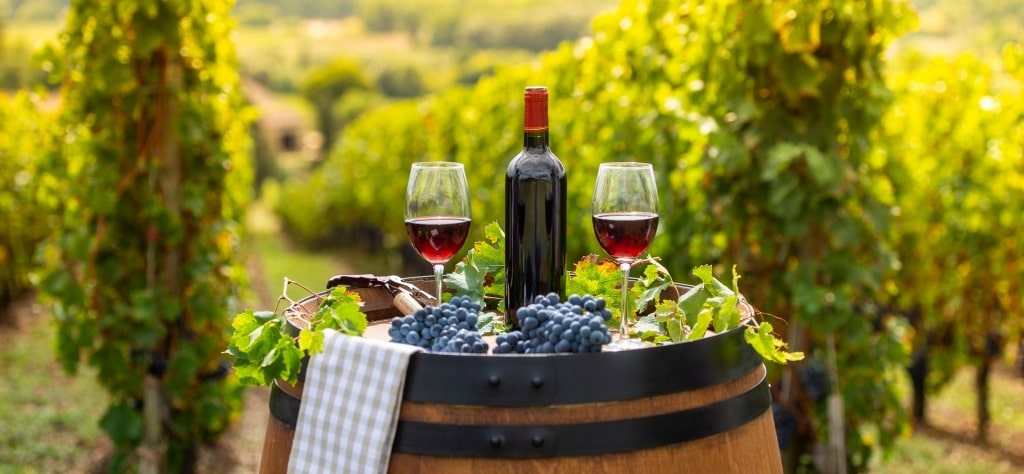
Bordeaux
The Bordeaux region’s capacity for producing wine was identified as far back as the Romans, although it wasn’t until around the 12th century that its world-beating reputation began to take shape. The catalyst was a royal marriage alliance between cross-channel rivals England and France that not only strengthened political ties but seeded an important client and supplier relationship that accelerated Bordeaux’s development.
Most of the region’s famous châteaux—the Bordeaux label indicating a wine-producing estate and also the French word for a castle—were established between the 17th and 19th centuries. In 1855, Emperor Napoleon III had the wines of the regions classified into “crus,” or growths, to provide a ranking system to identify the best. (This classification remains in place today, with only a few minor adjustments.) By this time, the Bordeaux wine region had cemented its preeminence in the world of wine.
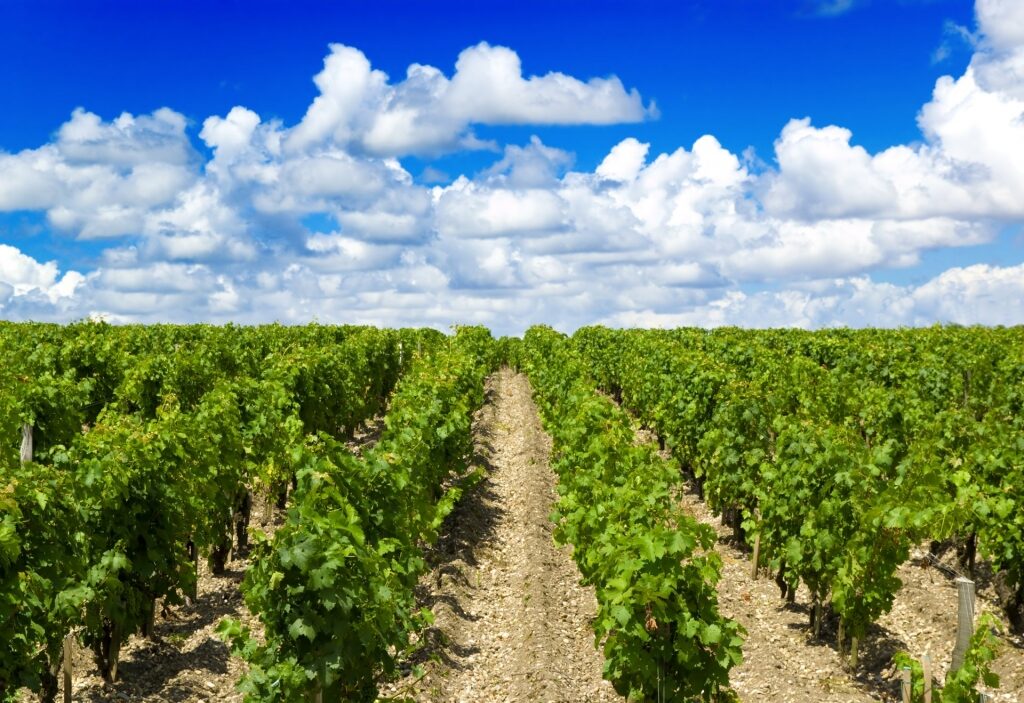
Bordeaux
However, only a few years later, its very existence was threatened by a succession of disasters. Phylloxera, an invasive aphid, flooded the vineyards of Europe, causing immense damage. Grafting European vines with resistant American varieties halted the aphid plague, only for successive world wars to wreak further devastation.
Fortunately, by the middle of the 20th century, the region was back on its feet and producing world-class wine. Today, over 6,000 producers inhabit the départment of the Gironde where Bordeaux is located, with 300,000 acres of carefully ordered vines taking advantage of the region’s south-facing slopes, alluvial plains, and temperate maritime climate. The result is 53 million cases of Bordeaux sent out annually to a grateful world.
The Wines of the Region
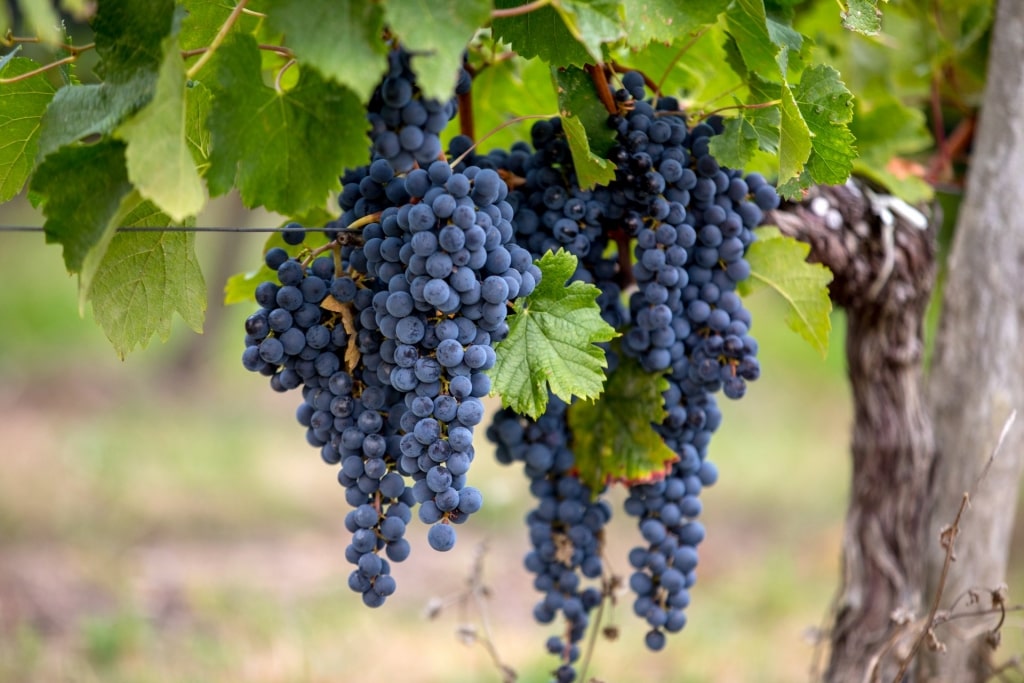
Merlot grapes
The Bordeaux wine region is famous for its reds and sweet wines in particular. Red tends to be made from a blend of grapes that thrive in the area, including:
- Merlot: The most widely grown grape, it produces wines that are rich and smooth.
- Cabernet Sauvignon: Known for producing complex, full-bodied reds that have a superior capacity for aging.
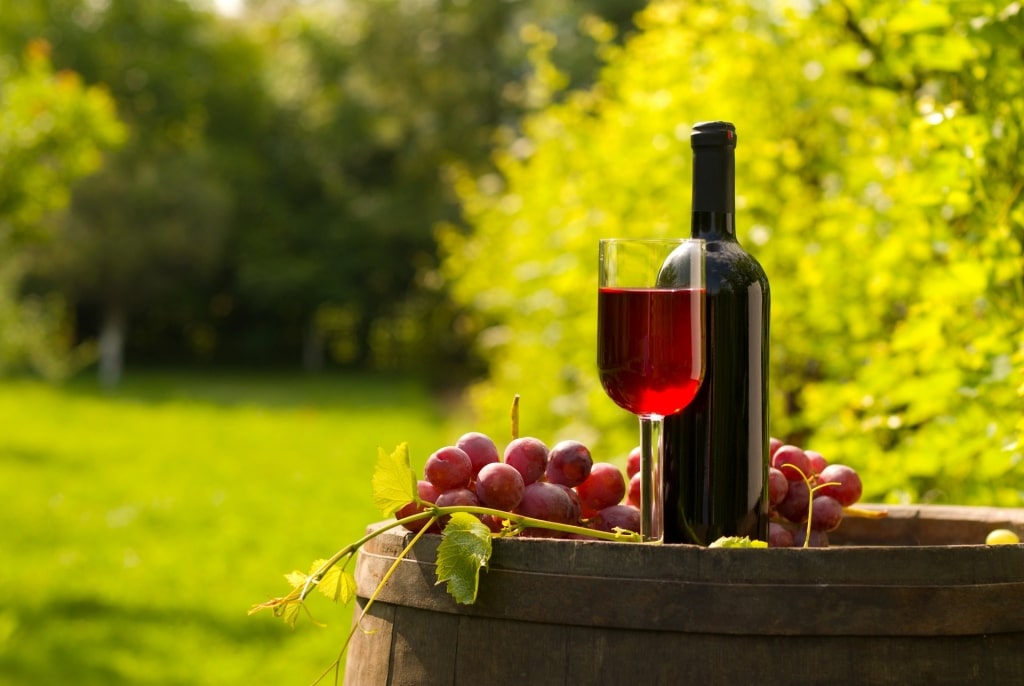
Cabernet Sauvignon
These grapes, alongside Cabernet Franc, dominate the blends that typify Bordeaux’s wine production. Mixed in at lesser percentages are blending grapes such as Petit Verdot, known for adding interesting flavors such as leather or pencil shavings, and Malbec, a grape now more readily associated with the heavyweight single-varietal reds produced in South America.
Of the overall production in this scenic strip of the Nouvelle-Aquitaine region, less than 10% is white wine. However, what is produced is often as well regarded as the reds.
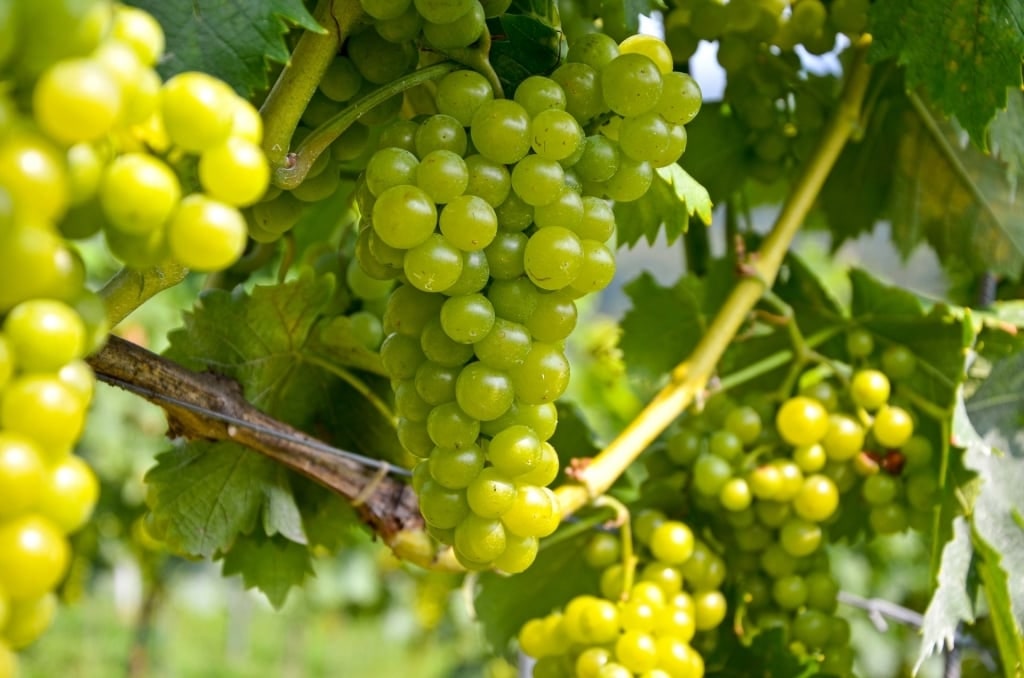
Sauvignon Blanc grapes
Its whites—made primarily from Sauvignon Blanc, Sémillon, and Muscadelle grapes—are typically dry or, more famously, sweet. It’s here that the honeyed sweet wines known as Sauternes are made, produced in the eponymous area to the southwest of the Bordeaux wine region. Their production involves the process known as noble rot, when autumn mists encourage botrytis cinerea fungus to develop on the grapes and concentrate the fruit’s sugar.
While Bordeaux is a name synonymous with excellence, it’s wise to remember that not all wine produced by a château is created equally. The finest grapes are used in a premier wine which is the flagship of a producer. After that, you have second, third, and so on, depending on the size of the estate.
These lesser wines are often excellent value and still delicious thanks to being made to the same exacting standards, although often better drunk young.
The Terroir
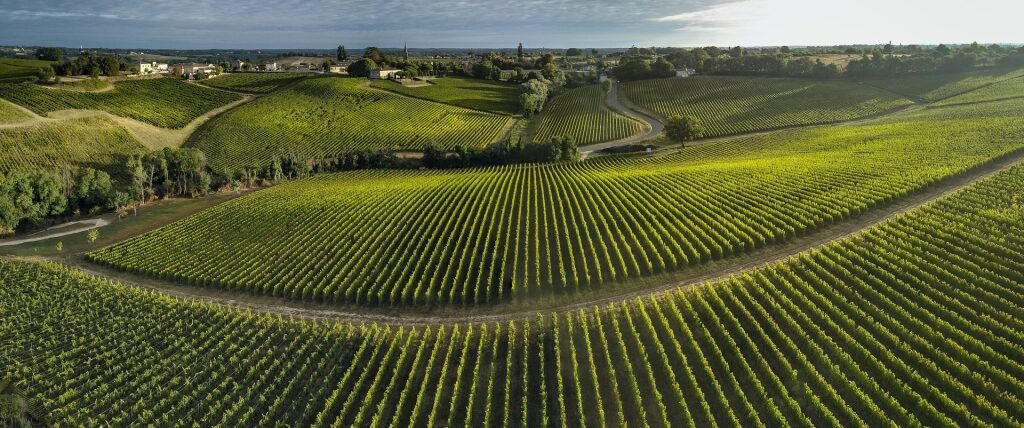
Gironde estuary
The Bordeaux wine region sited around the Gironde estuary—Europe’s largest—is described as having an extraordinary terroir. This French word describes more than just the terrain that a vineyard is planted on. It encapsulates everything natural that influences the vines and the grapes they bear, including the make-up of the soil, the weather, the altitude of the vineyards, and a little je ne sais quoi.
Bordeaux’s terroir boasts some highly attractive elements for winemakers. Its proximity to the coast ensures gentle winters with minimal, destructive frosts and hot summers with plenty of sunshine that continues into the fall. The pines of the Landes Forest create a protective barrier between the Bordeaux wine region and Atlantic winds. The soil across the region is also relatively poor, ensuring hard-working vines that produce more concentrated, less sugary grapes more conducive to vinification.
Read: Summer in France
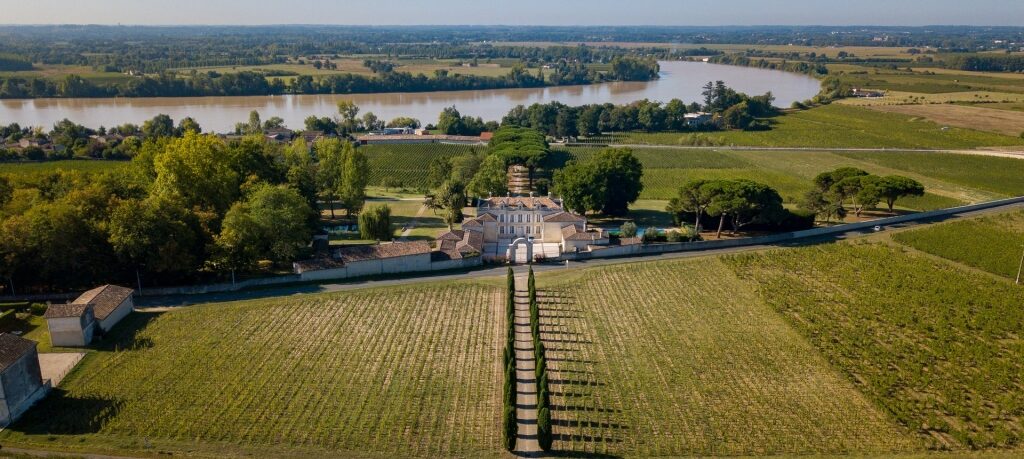
Dordogne
The wine-growing region, which either resembles an inverted feather or pork chop (depending on how much Bordeaux you’ve tasted), wraps itself around the Gironde Estuary and its two branching tributaries—the east-snaking Dordogne and the south-wending Garonne. On a map, the region is divided into its various AOC, or appellations d’origine controlee—labels that help you to establish the authenticity and provenance of your bottle of Bordeaux.
Generally speaking, Bordeaux’s appellations fall within three sub-regions:
- the gravelly Left Bank
- the limestone-heavy Right Bank
- the sandy, mixed-bag Entre-Deux-Mer
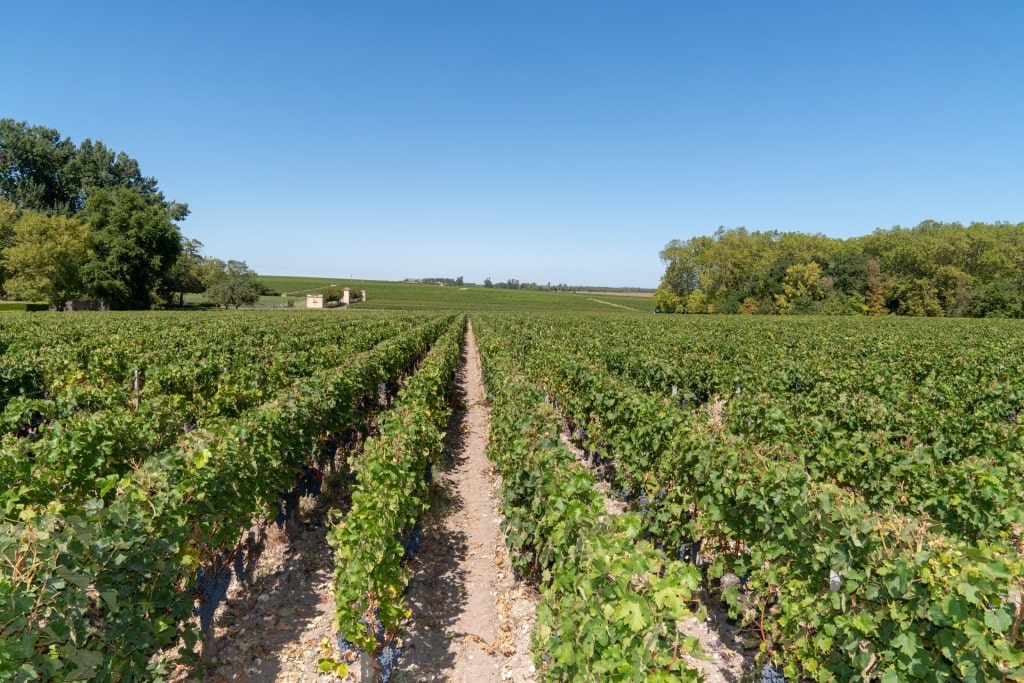
Médoc
These labels denote where they lie in relation to the estuary, with the Entre-Deux-Mers the land between the Gironde’s forking tributaries. Each bank has its superstar vineyards, although the Left (especially in the Médoc and Haut Médoc appellations) is particularly stacked with historic names including Margaux, Lafite, and Mouton Cadet.
For all of that, it’s on the Right Bank that you’ll find some of the region’s most expensive wines, such as Petrus, Le Pin, and Cheval Blanc.
What to Expect in the Bordeaux Wine Region
The Bordeaux wine region is a handsome bucolic landscape striped with vines, split by broad rivers, and punctuated by haughty châteaux. It’s also sizeable—at nearly 300,000 acres, it’s roughly three times the size of the island of Barbados—so be strategic. It takes about an hour and a half to travel by car between the Left and Right Banks.
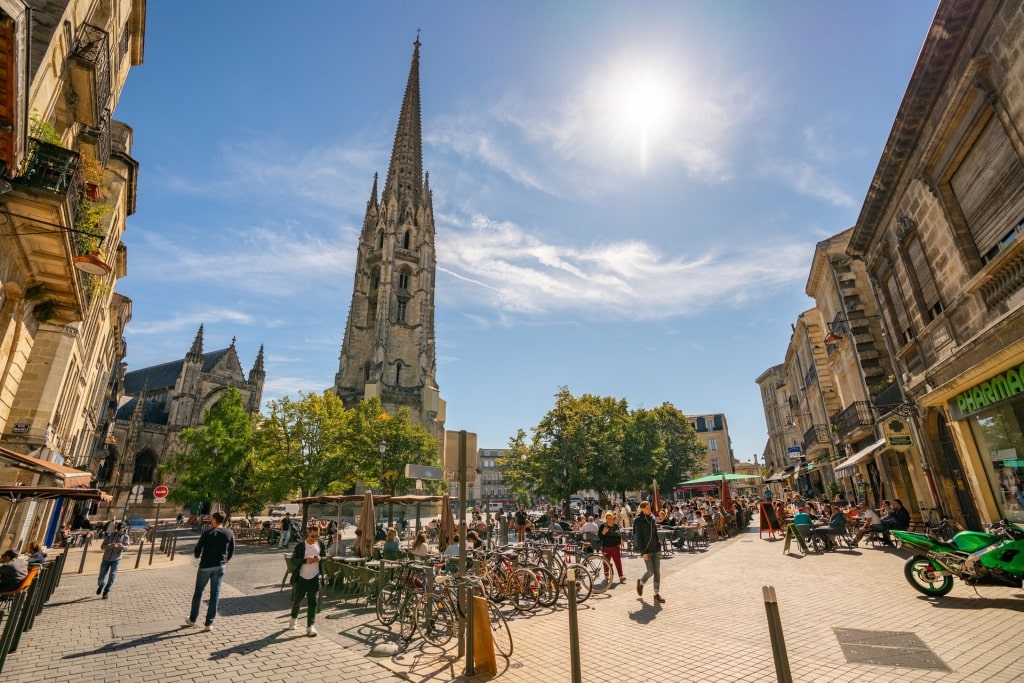
Old Town
Don’t overlook the city of Bordeaux. A historic port city with a UNESCO-listed Old Town, it’s a great place to base yourself. Naturally, there’s an abundance of wine-related activities in the city—the modern Cité du Vin museum is a gleaming monument to the area’s famous industry. Additionally, châteaux such as Haut-Brion and Pape Clement are within the city limits.
When making your choices as to which châteaux to visit, be aware that some are not the mansion-castles you might anticipate. The term “château” in industry nomenclature simply refers to all wine-producing properties without any consideration for the architecture. While it isn’t hard to find historic châteaux, you’ll hit paydirt with a visit to the Médoc.
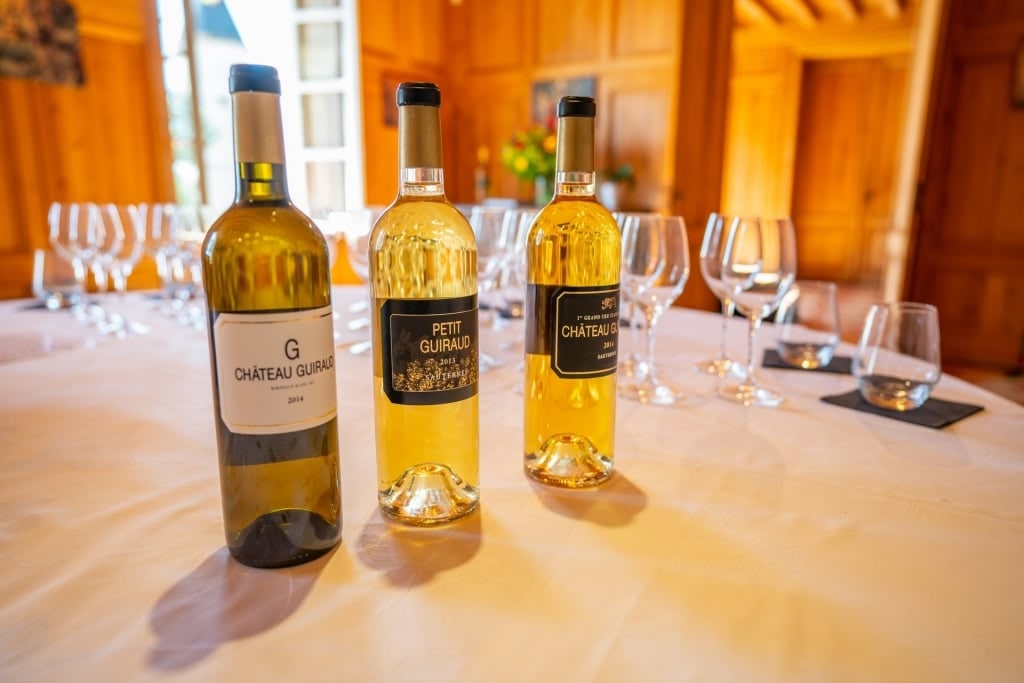
Wine tasting
Prior to your visit, be sure to have arranged your tastings at least a month in advance, usually through the estate’s website. Check your timings—regular events in Bordeaux’s calendar create disruption for tourism, such as August when the entire country is on holiday. It’s also important to note that, unlike the more casual New World tastings you might have enjoyed, Bordeaux’s tend to be private, 90-minute tours.
This level of attention reflects the traditional manner in which the Bordeaux wine fraternity, often the grandchildren and great-grandchildren of wine-producing families, continues to conduct itself. And while this generates a tangible sense of the region’s history and prestige, it also cuts down on certain conveniences. These include most châteaux closing over the weekend as well as no direct sales of bottles.
That said, Bordeaux isn’t entirely impervious to change. With a cool climate essential for healthy Merlot grapes—a variety that covers roughly 60 percent of the region—the unusual heat and drought of recent summers have been deepening existing climate concerns. In response, some winemakers are testing potential Merlot-alternatives that could signal a shift in the style of some Bordeaux production.
Where to Go in the Bordeaux Wine Region
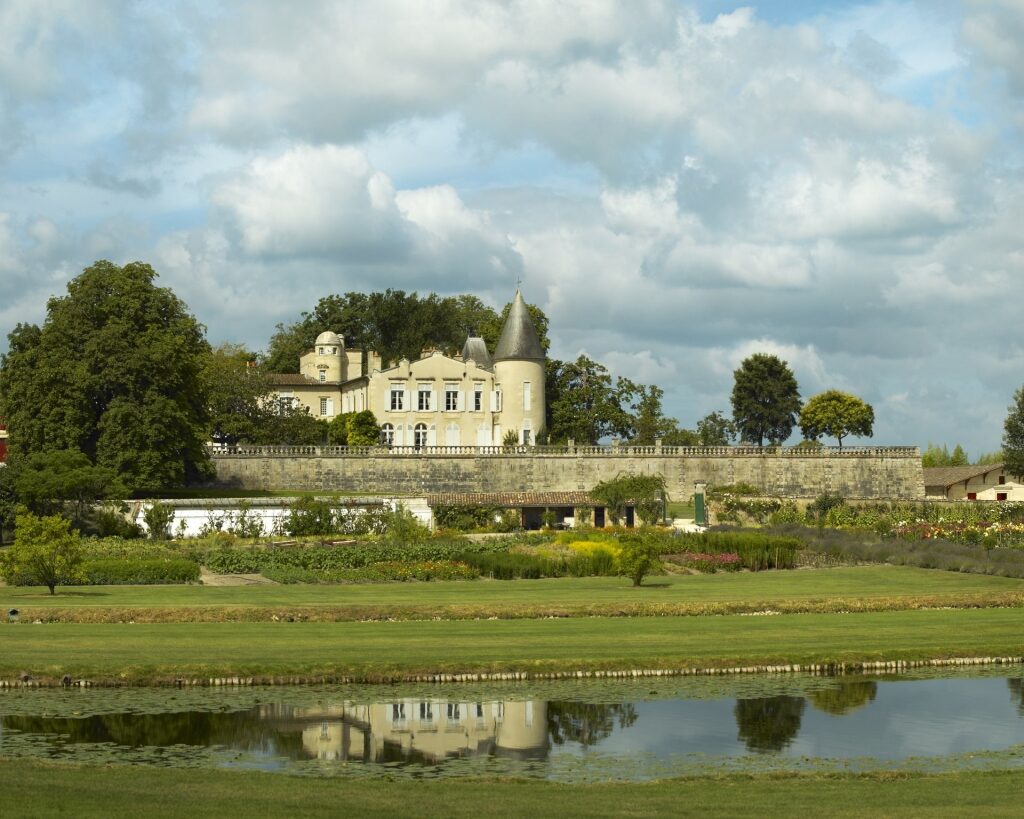
Château Lafite Rothschild
With so many producers and vintages available, you can travel to the Bordeaux wine region year after year and still uncover new pockets of mind-blowing sensory treasures. This introductory list offers a variety of experiences that will all be well worth your time.
Château Lafite Rothschild
Château Lafite Rothschild is one of the oldest and most respected châteaux in this wine region, if not the world. Your tour, however, while comprehensive, is down-to-earth and engaging. You’ll see the extensive vineyard, one of the largest in the region, and enter its awe-inspiring circular cellar ahead of your memorable tasting.
Located in Pauillac AOC, the Médoc’s wine capital, you’ll also find close by other ‘premiers grands cru classes’ (or best of the best) vineyards of Latour and Mouton. The well-structured wine produced here can vary in style but expect a glass of red fruit, roasted notes, and a long finish.
Château Pape Clément
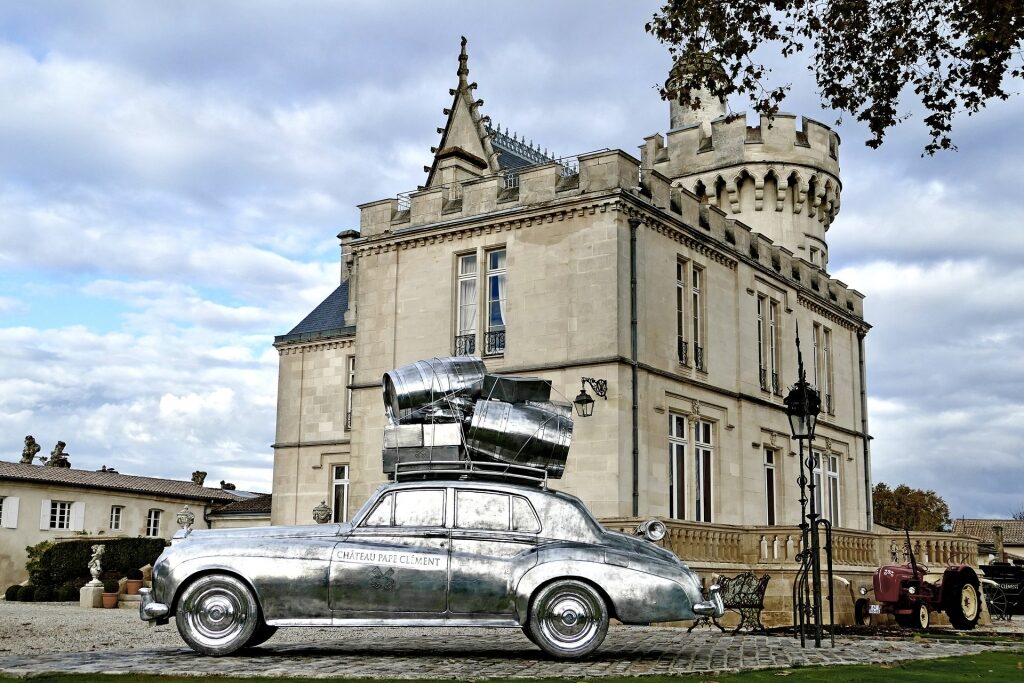
By Lavalliere7 Own work CC BY-SA 4.0
Pape Clément, the region’s oldest château, offers an interesting blend of old and new cultures. It was built in the 13th century and yet is joint-owned by billionaire Bernard Magrez, a relative newcomer to the Bordeaux wine region who has brought a more commercially-minded outlook to his portfolio of vineyards.
Only 15 minutes’ drive from Bordeaux city center, this château, with its 79-acre vineyard, offers tours of the historic cellars that once belonged to Pope Clement V (to set the mood, Gregorian chanting is played over concealed speakers). It’s also conveniently open on weekends.
While its reds are very good, the château is best known for its intense white wines offering aromas of truffle and apricot that give way to flavors of grapefruit and brioche.
Château d’Yquem
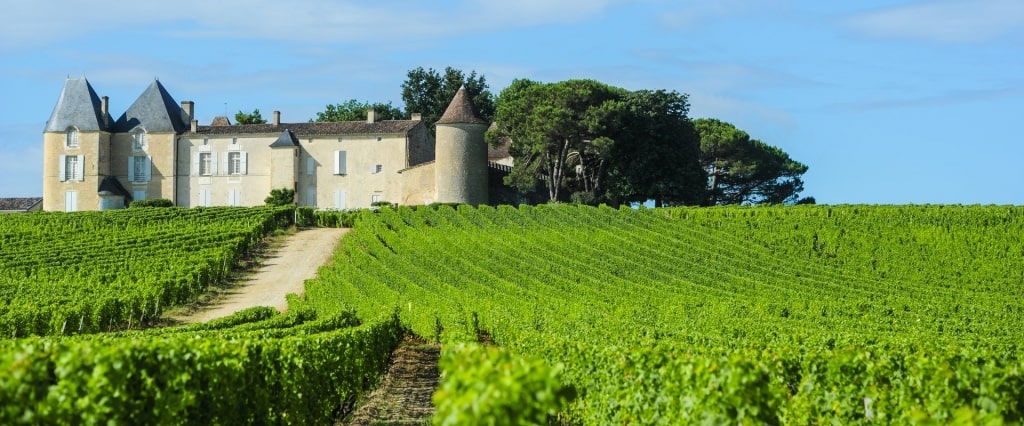
Château d’Yquem
Château d’Yquem, surrounded by its small sea of vineyards, is located 45 minutes south by car from Bordeaux city. With a history that stretches back to the 16th century, this is one of the great old estates of the Bordeaux wine region.
Based in the Sauternes AOC, perhaps the world’s best sweet wine terroir, you’ll find pebbles underfoot and, beneath that, clay. Mist in the fall encourages the development of the noble rot essential to the creation of the syrupy golden wines produced at Château d’Yquem. Considered the finest sweet wine in the world, they are renowned for the complexity they develop after 20 years of aging, with a cornucopia of dessert-friendly flavors such as ginger, apricot, and toasted brioche.
Despite the cream-colored chateau’s rather fortified appearance, it’s open to visitors seven days a week. Book in advance for one of its 90-minute guided tours and tastings.
Saint-Émilion
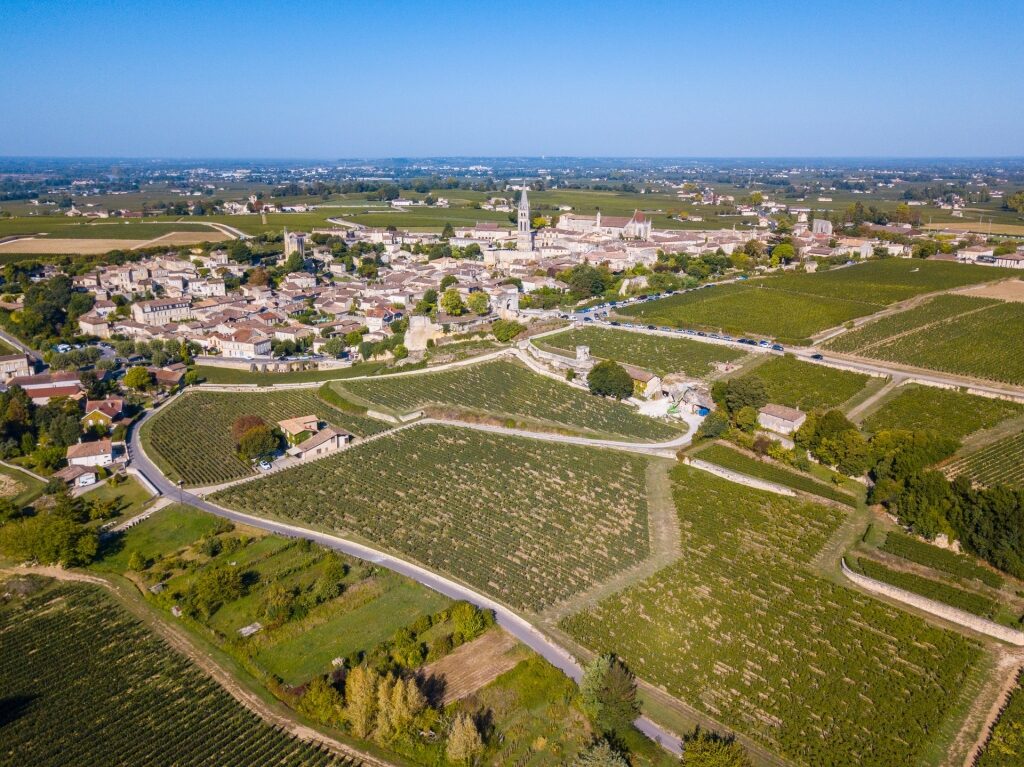
Saint-Émilion
Saint-Émilion is a famous town located on the Right Bank and a name long associated with quality winemaking. The first wine-producing area to be recognized as a “cultural landscape” on UNESCO’s World Heritage List, the ancient town’s sandstone buildings and terracotta rooftops are a graceful sight rising over the ranks of leafy green vines.
It’s been a draw for so long that it’s more of a center of tourism than the nearby chateaux—such as the highly regarded Cheval Blanc and Château Ausone—that surround it. While it’s difficult to generalize, the wines from the Saint-Émilion appellations are rich, rounded, and full of spice and smoke.
Read: Best Things to Do in Bordeaux
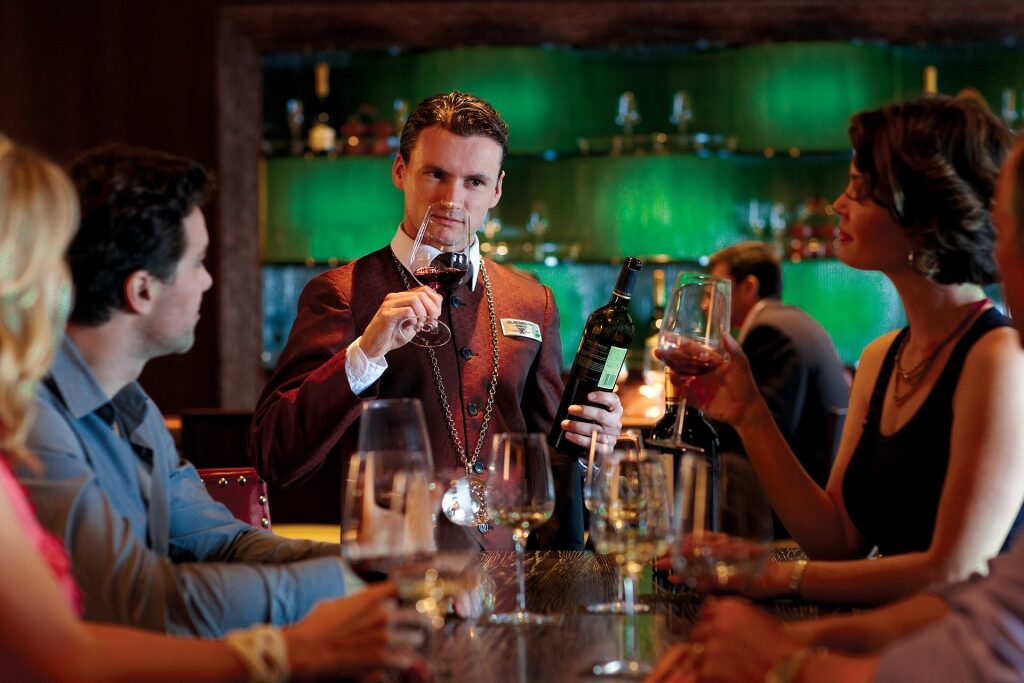
Cellar Masters
Embark on your own wine tasting odyssey on a cruise to Bordeaux with Celebrity Cruises, winner of the Award of Excellence at the Wine Spectator Restaurant Wine List Awards for multiple years in a row.
Visit vineyards across this majestic region while sampling our exclusive wine selection on board. Browse our cruise itineraries online and start planning your next unforgettable vacation.
